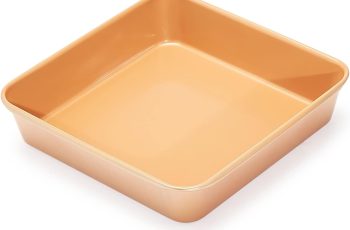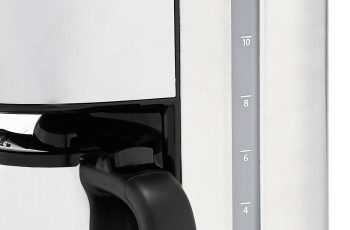Ad Blocker Detected
Our website is made possible by displaying online advertisements to our visitors. Please consider supporting us by disabling your ad blocker.
In the world of cookware, decorative Dutch ovens have emerged as a popular choice amongst both professional chefs and home cooks. With their stunning and eye-catching designs, these cookware pieces not only add a touch of elegance to your kitchen but also offer exceptional functionality and durability. From intricate patterns to vibrant colors, the aesthetics of decorative Dutch ovens often steal the spotlight. However, the attention to detail put into their design goes beyond mere visual appeal. This article explores the artistry and practicality behind decorative Dutch ovens, shedding light on why they have become a coveted item for culinary enthusiasts worldwide.
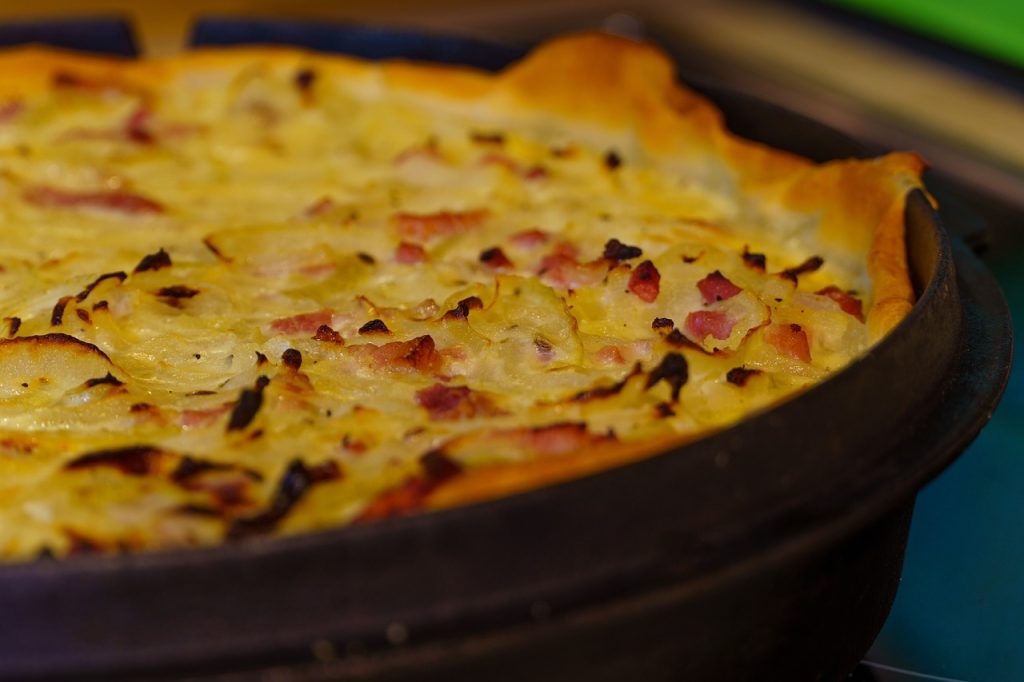
1. History of Dutch Ovens
Dutch ovens have a rich history that dates back centuries, with origins rooted in the Netherlands. This versatile and durable cooking vessel has evolved over time, adapting to various cultures and culinary traditions. Understanding the history of Dutch ovens allows us to appreciate their significance and impact on modern-day cooking.
1.1 Origins of Dutch Ovens
The Dutch oven’s name can be traced back to its place of origin, the Netherlands, during the 17th century. Dutch traders introduced these heavy cast iron pots to the American colonies, inspiring the name “Dutch oven.” However, the concept of a cooking pot with a tight-fitting lid predates the Dutch version.
1.2 Introduction of Dutch Ovens in Europe
The Dutch oven gained popularity in Europe during the 18th century. Its versatility, durability, and ability to distribute heat evenly made it a staple in many kitchens. As different European countries embraced the Dutch oven, each region added its own unique touch and design, further diversifying the types of Dutch ovens available.
2. Types and Materials
Dutch ovens come in various types and are made from different materials. Understanding these options allows you to choose the one that best suits your cooking needs and preferences.
2.1 Traditional Dutch Ovens
Traditional Dutch ovens are known for their timeless and reliable design. They are available in three main materials: cast iron, enamel-coated, and stoneware.
2.1.1 Cast Iron Dutch Ovens
Cast iron Dutch ovens are the original and most traditional type. Known for their excellent heat retention, they are perfect for slow cooking, braising, and baking. Cast iron Dutch ovens are prized for their durability and ability to develop a natural non-stick surface over time.
2.1.2 Enamel-coated Dutch Ovens
Enamel-coated Dutch ovens combine the advantages of cast iron with a colorful and easy-to-clean enamel coating. This coating prevents rust and allows for a wider range of attractive finishes. Enamel-coated Dutch ovens are ideal for dishes that require gentle heat and can also be used as elegant serving dishes.
2.1.3 Stoneware Dutch Ovens
Stoneware Dutch ovens are crafted from clay and undergo a firing process that creates a hardened, non-porous surface. They excel at retaining heat and are commonly used for baking bread, casseroles, and stews. Stoneware Dutch ovens offer a rustic and natural aesthetic, adding charm to any kitchen.
2.2 Contemporary Dutch Ovens
Contemporary Dutch ovens are designed with modern materials and technology, offering additional options for the discerning home chef.
2.2.1 Stainless Steel Dutch Ovens
Stainless steel Dutch ovens are prized for their sleek design, durability, and even heat conduction. They are resistant to staining and scratching, making them a versatile and long-lasting choice for many cooking applications.
2.2.2 Copper Dutch Ovens
Copper Dutch ovens provide exceptional heat conductivity, allowing for precise temperature control. The distinctive copper exterior adds an elegant touch to any kitchen, while the interior is typically lined with a non-reactive material for safe cooking.
2.2.3 Ceramic Dutch Ovens
Ceramic Dutch ovens offer a modern twist on traditional materials. They are lightweight and come in a variety of vibrant colors. The ceramic construction provides even heat distribution and is oven-safe, making it suitable for a wide range of cooking methods.
3. Form and Shape
Dutch ovens are available in various shapes to accommodate different cooking needs and preferences.
3.1 Round Dutch Ovens
Round Dutch ovens are the most common shape, known for their versatility and ability to evenly distribute heat. Their design allows for efficient stirring and easy accessibility, making them suitable for a wide range of dishes.
3.2 Oval Dutch Ovens
Oval Dutch ovens offer a unique shape that accommodates longer cuts of meat and fish. The elongated design ensures even heat distribution, making it suitable for slow cooking and braising larger portions.
3.3 Specialty Dutch Ovens
Specialty Dutch ovens often feature unique shapes, such as heart-shaped, flower-shaped, or animal-shaped designs. While these may be more decorative than practical, they can add a whimsical touch to your kitchen decor and make for memorable serving dishes.
4. Sizes and Capacities
Dutch ovens come in various sizes, allowing you to choose the one that best suits your cooking needs and the number of people you are serving.
4.1 Mini Dutch Ovens
Mini Dutch ovens are perfect for individual servings, making them ideal for appetizers, soups, or individual desserts. These smaller sizes also make for charming presentation pieces when serving guests.
4.2 Standard Dutch Ovens
Standard Dutch ovens come in sizes ranging from 4 to 8 quarts, making them versatile for everyday cooking. These sizes are suitable for most recipes and can comfortably feed small to medium-sized families or groups.
4.3 Large Dutch Ovens
Large Dutch ovens, typically between 9 and 12 quarts, are excellent for cooking larger quantities or for entertaining guests. They allow you to prepare generous portions of stews, roasts, or large batch recipes with ease.
4.4 Extra-large Dutch Ovens
Extra-large Dutch ovens, with capacities exceeding 12 quarts, are designed for commercial use or for those who frequently cook for larger gatherings. These spacious ovens are perfect when preparing meals for parties, events, or community gatherings.
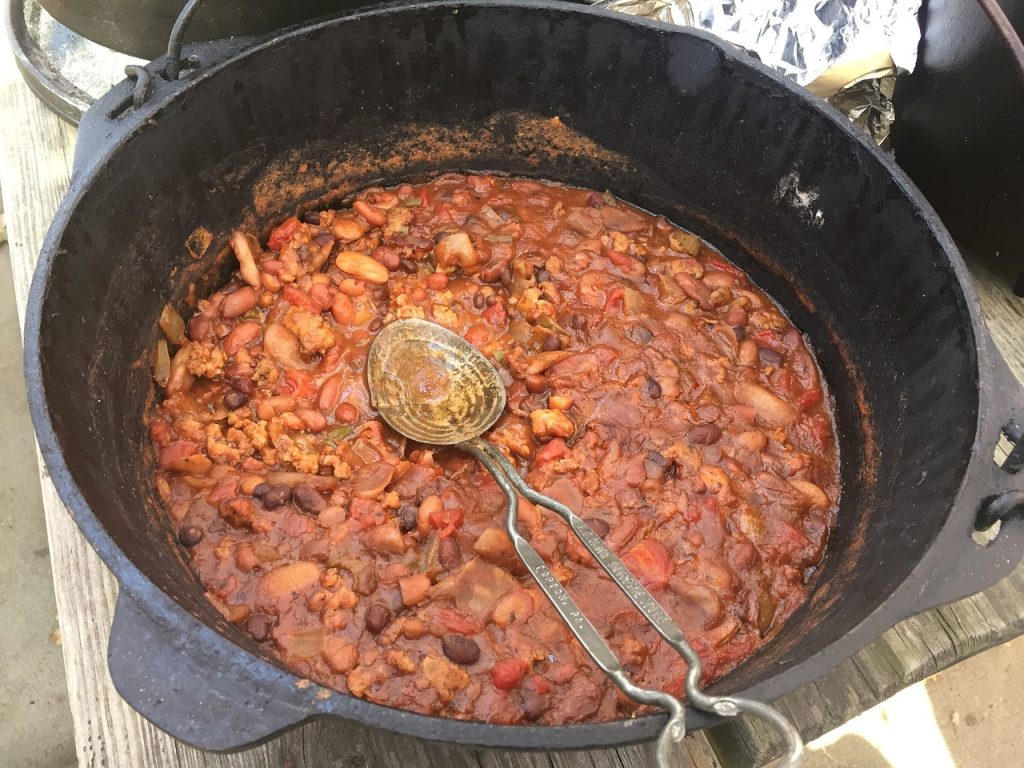
5. Lid Design and Handles
The design of the lid and handles greatly impacts the functionality and aesthetics of a Dutch oven.
5.1 Domed Lids
Domed lids are a classic feature of Dutch ovens. This design allows for excellent heat circulation and encourages condensation to form, keeping dishes moist and flavorful. Domed lids are ideal for recipes that benefit from slow cooking, such as pot roasts and stews.
5.2 Flat Lids
Flat lids offer versatility in cooking methods. They allow for stacking, both in the oven and on the stovetop, promoting efficient use of space. Furthermore, flat lids provide a stable surface for placing coals or other heating elements for outdoor cooking.
5.3 Loop Handles
Loop handles are a common feature in traditional Dutch ovens. They offer a secure and ergonomic grip, making it easier to transport and maneuver the pot both in and out of the oven. Loop handles also add to the traditional aesthetic of the Dutch oven.
5.4 Side Handles
Side handles provide a sleek and modern look to Dutch ovens. They are typically made of heat-resistant materials that stay cool to the touch, making them convenient for handling. Side handles offer easy maneuverability and are well-suited for serving dishes directly from the oven to the table.
6. Colors and Finishes
Dutch ovens come in a wide range of colors and finishes, allowing you to choose one that suits your personal style and kitchen decor.
6.1 Classic Black
Classic black is a timeless and versatile color choice for Dutch ovens. Its understated elegance pairs well with any kitchen decor, and it can seamlessly blend into both modern and traditional settings. Black Dutch ovens often have a matte or glossy finish, providing aesthetic appeal and easy maintenance.
6.2 Vibrant Colors
Vibrant colors, such as red, blue, and yellow, offer an instant pop of personality and visual interest to your kitchen. These bold choices inspire creativity and make a statement, transforming the Dutch oven into a centerpiece rather than a mere cooking vessel.
6.3 Muted Tones
Muted tones, such as pastels or earthy hues, provide a calming and sophisticated look. These colors create a serene ambiance and harmonize with a variety of kitchen decor styles, from modern farmhouse to Scandinavian minimalism.
6.4 Matte Finishes
Matte finishes offer a sleek and refined look. They minimize reflections and can lend a contemporary touch to any kitchen. Matte finishes are often found in neutral colors, such as white, gray, or black, enhancing the Dutch oven’s modern aesthetic.
6.5 Glossy Finishes
Glossy finishes provide a polished and luxurious appearance. They reflect light and bring a sense of vibrancy to the Dutch oven. Glossy finishes are available in a range of colors, from bold and vibrant to more subtle and sophisticated tones.
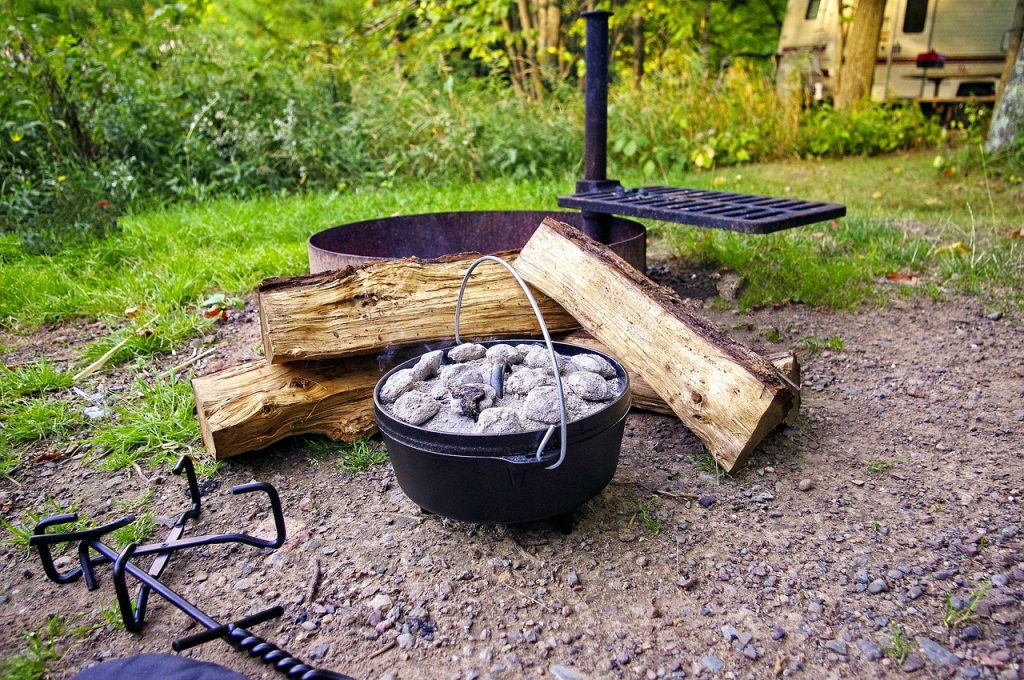
7. Embellishments and Patterns
The aesthetics of a Dutch oven can be enhanced through various embellishments and patterns, adding an extra layer of visual interest.
7.1 Engraved Designs
Engraved designs on Dutch ovens showcase intricate details and craftsmanship. These designs can range from simple geometric patterns to elaborate motifs and symbols. Engraving adds a touch of elegance and refinement to the Dutch oven, elevating its overall aesthetic appeal.
7.2 Relief Patterns
Relief patterns on Dutch ovens offer a three-dimensional element, creating depth and texture. Popular relief patterns include floral motifs, curvilinear designs, or traditional symbols. The raised patterns provide an additional tactile experience while adding a decorative aspect to the Dutch oven.
7.3 Hand-painted Artwork
Hand-painted artwork on Dutch ovens allows for personalized customization and unique expression. From delicate brush strokes depicting natural scenes to intricate patterns inspired by cultural heritage, hand-painted artwork transforms the Dutch oven into a functional work of art.
7.4 Decals and Transfers
Decals and transfers are a popular way to add decorative elements to Dutch ovens. These pre-designed images or patterns are applied onto the surface of the pot, providing endless possibilities for creative expression. Decals and transfers offer convenience and flexibility in incorporating various themes and designs.
8. Branding and Logos
Dutch ovens often feature branding and logos, providing information about the manufacturer and adding a touch of authenticity to the product.
8.1 Etched or Engraved Branding
Etched or engraved branding involves permanently marking the Dutch oven with the manufacturer’s logo or name. This method ensures durability and longevity, as the branding becomes an integral part of the oven’s design.
8.2 Stamped Logos
Stamped logos are a common branding method for Dutch ovens. The manufacturer’s logo or name is stamped onto the surface of the pot, leaving a visible impression. Stamped logos offer a clean and minimalist look while maintaining the authenticity of the brand.
8.3 Painted Logos
Painted logos provide a more colorful and eye-catching branding option. The manufacturer’s logo or name is carefully applied onto the Dutch oven’s surface using paint, creating a visual focal point. Painted logos can be customized to match the overall color scheme and design of the Dutch oven.
9. Care and Maintenance
Caring for your Dutch oven is essential to ensure its longevity and optimal performance. Here are some guidelines for cleaning, seasoning, and storing your Dutch oven.
9.1 Cleaning Guidelines
When it comes to cleaning your Dutch oven, it is important to follow the manufacturer’s guidelines. In general, hand-washing with mild soap and warm water is recommended for cast iron and enamel-coated Dutch ovens. Avoid abrasive scrubbers or cleaners that may damage the surface. Stoneware, stainless steel, and ceramic Dutch ovens are often dishwasher safe, but it is always best to check the manufacturer’s instructions.
9.2 Seasoning Methods
Seasoning is a process that helps maintain and enhance the non-stick properties of cast iron Dutch ovens. To season your cast iron Dutch oven, coat it with a thin layer of oil and bake it at a low temperature. This process creates a protective layer that prevents food from sticking and helps prevent rust. Enamel-coated, stoneware, and other types of Dutch ovens do not require seasoning.
9.3 Storing Suggestions
To maintain the condition of your Dutch oven, it is important to store it properly. Make sure the Dutch oven is completely dry before storing to prevent moisture buildup and potential rusting. Avoid stacking heavy items on top of the Dutch oven, as this may cause damage. If you have limited storage space, consider using a soft cloth or paper towel to separate stacked Dutch ovens and prevent scratches or chipping.
10. Display and Styling
Dutch ovens have become more than just functional kitchenware – they are now cherished for their aesthetic appeal. Here are some ideas for displaying your Dutch oven and incorporating it into your kitchen decor.
10.1 Showcasing Dutch Ovens
When not in use, Dutch ovens can be displayed in open shelving or on a kitchen countertop. Arrange them in a visually pleasing manner, considering size, shape, and colors. Use a mix of different designs and finishes to add visual interest and create a focal point in your kitchen.
10.2 Pairing with Kitchen Decor
Integrate your Dutch oven into your kitchen decor by incorporating matching or complementary colors and patterns. Coordinate with other kitchen accessories, such as dish towels, oven mitts, or utensil holders, to create a cohesive and stylish look. Consider your overall kitchen theme or design style for inspiration.
10.3 Using Dutch Ovens as Centerpieces
Dutch ovens can serve as stunning centerpieces for your dining table or kitchen island. Fill them with colorful fruits, vegetables, or flowers to create a vibrant and organic display. Alternatively, use them to serve dishes directly at the table, allowing your guests to appreciate both the flavors and the aesthetics of your culinary creation.
In conclusion, the aesthetics of Dutch ovens have evolved over time, offering a wide range of designs, materials, colors, and finishes. From the traditional charm of cast iron to the contemporary elegance of stainless steel, Dutch ovens have become statement pieces in the kitchen. Whether displayed as decorative objects or used for their intended purpose, the beauty and functionality of Dutch ovens add a touch of sophistication to any culinary experience.
